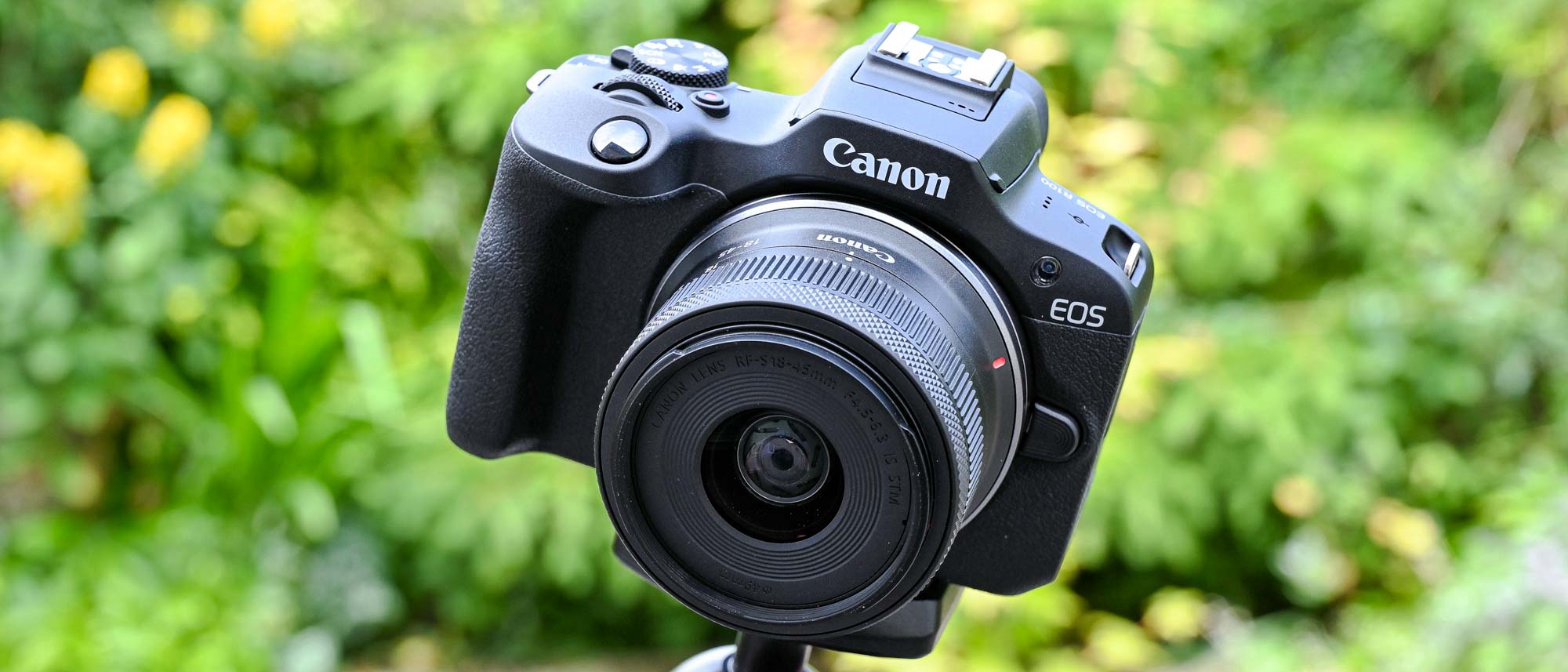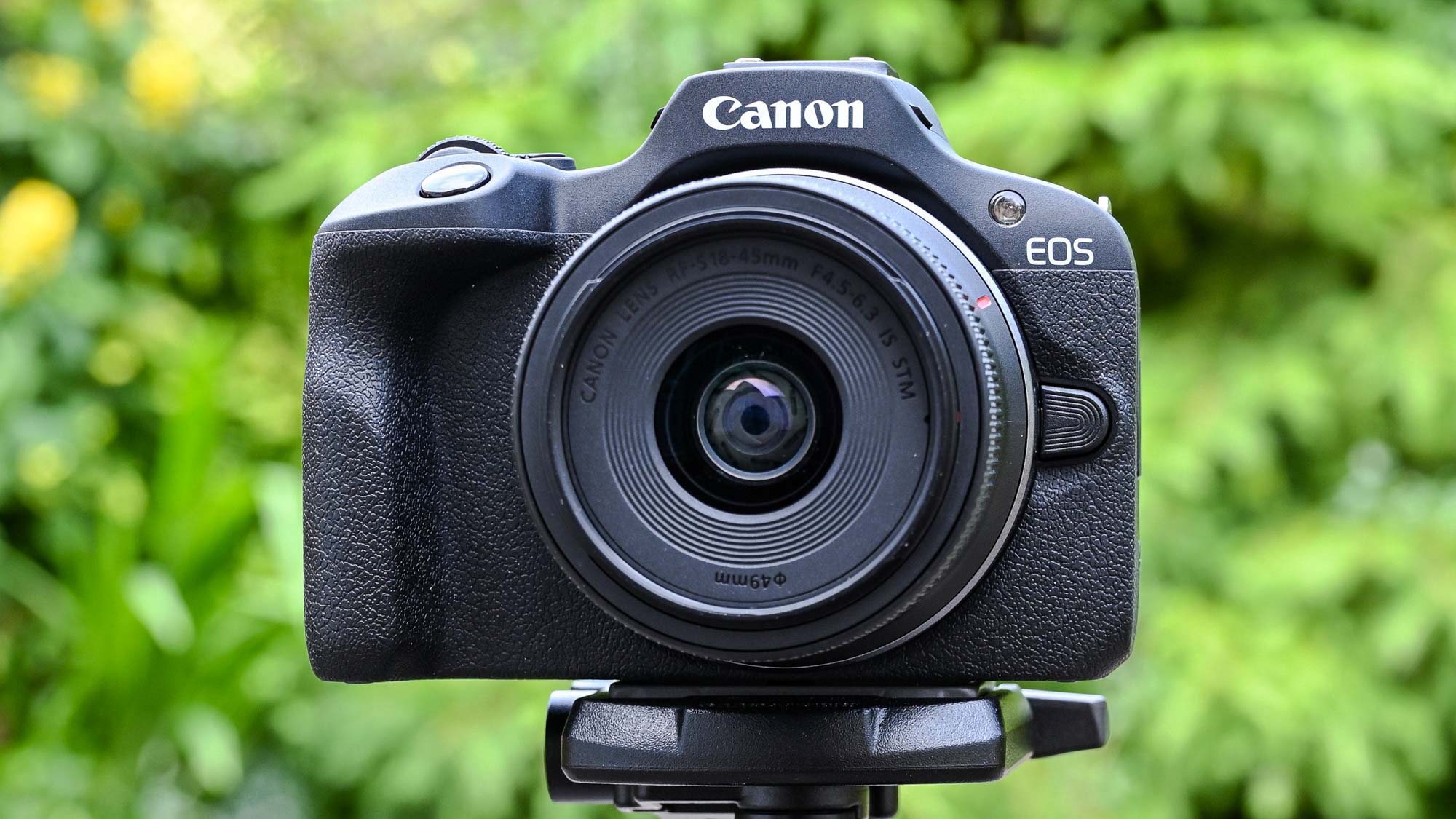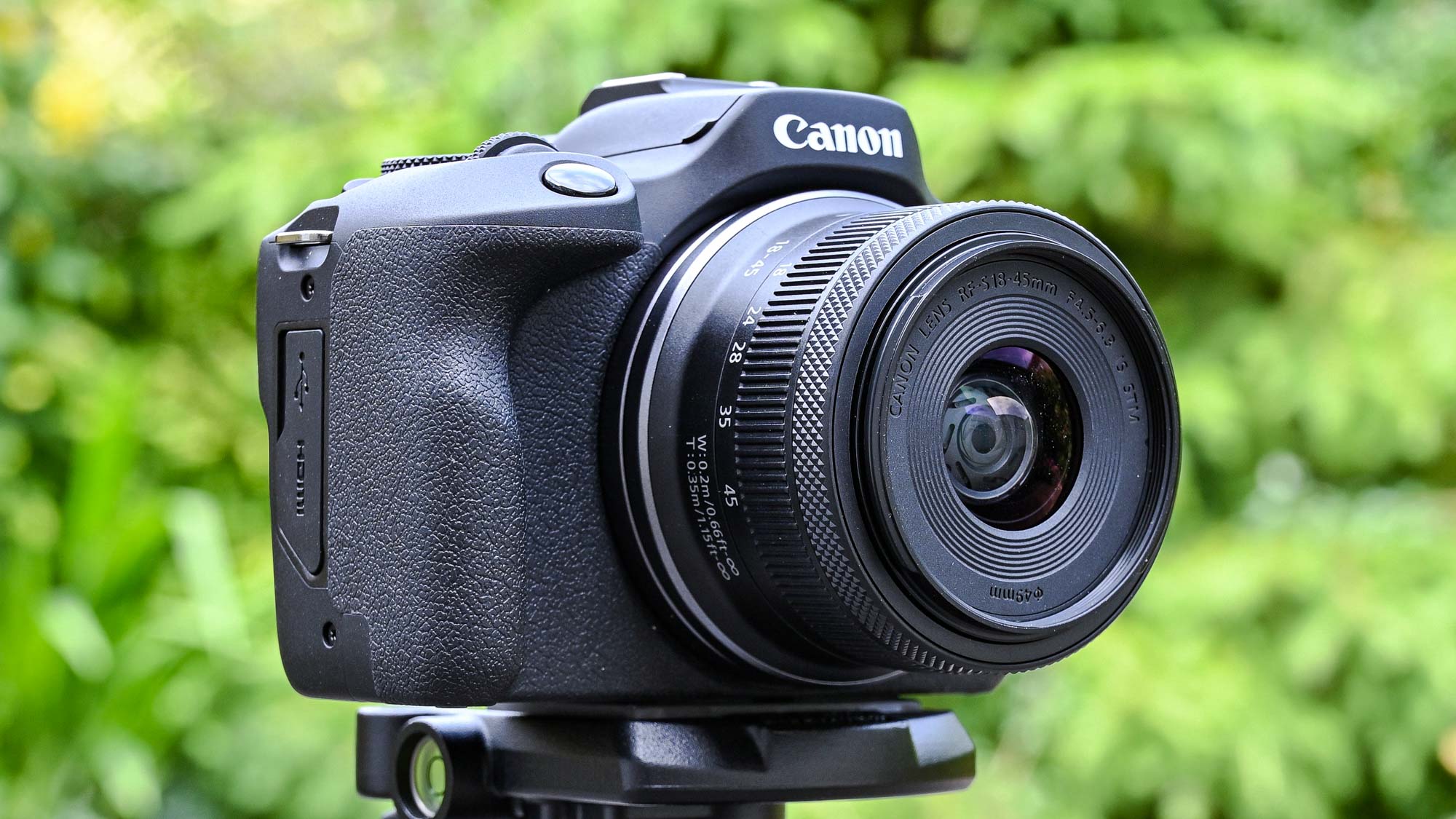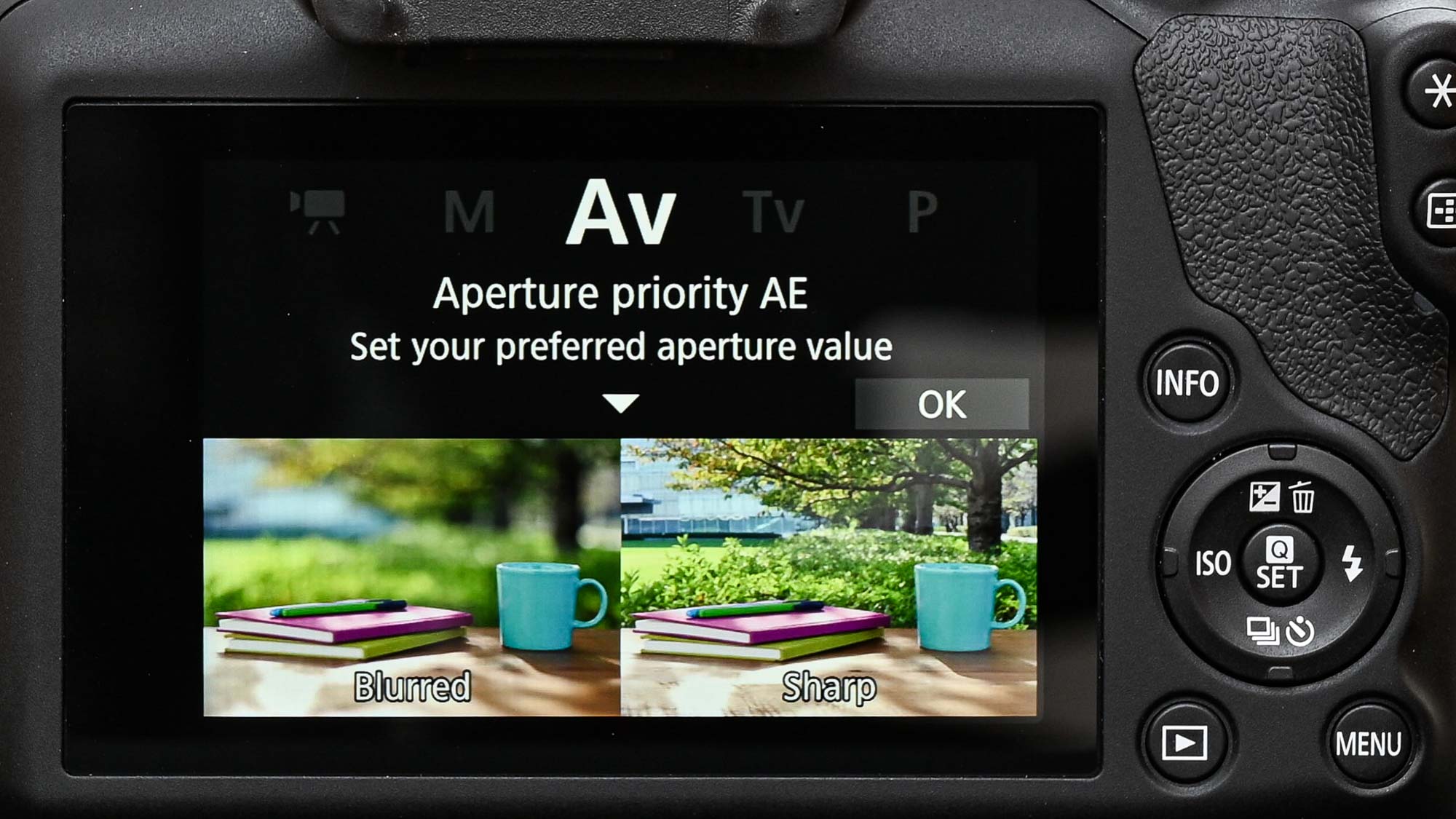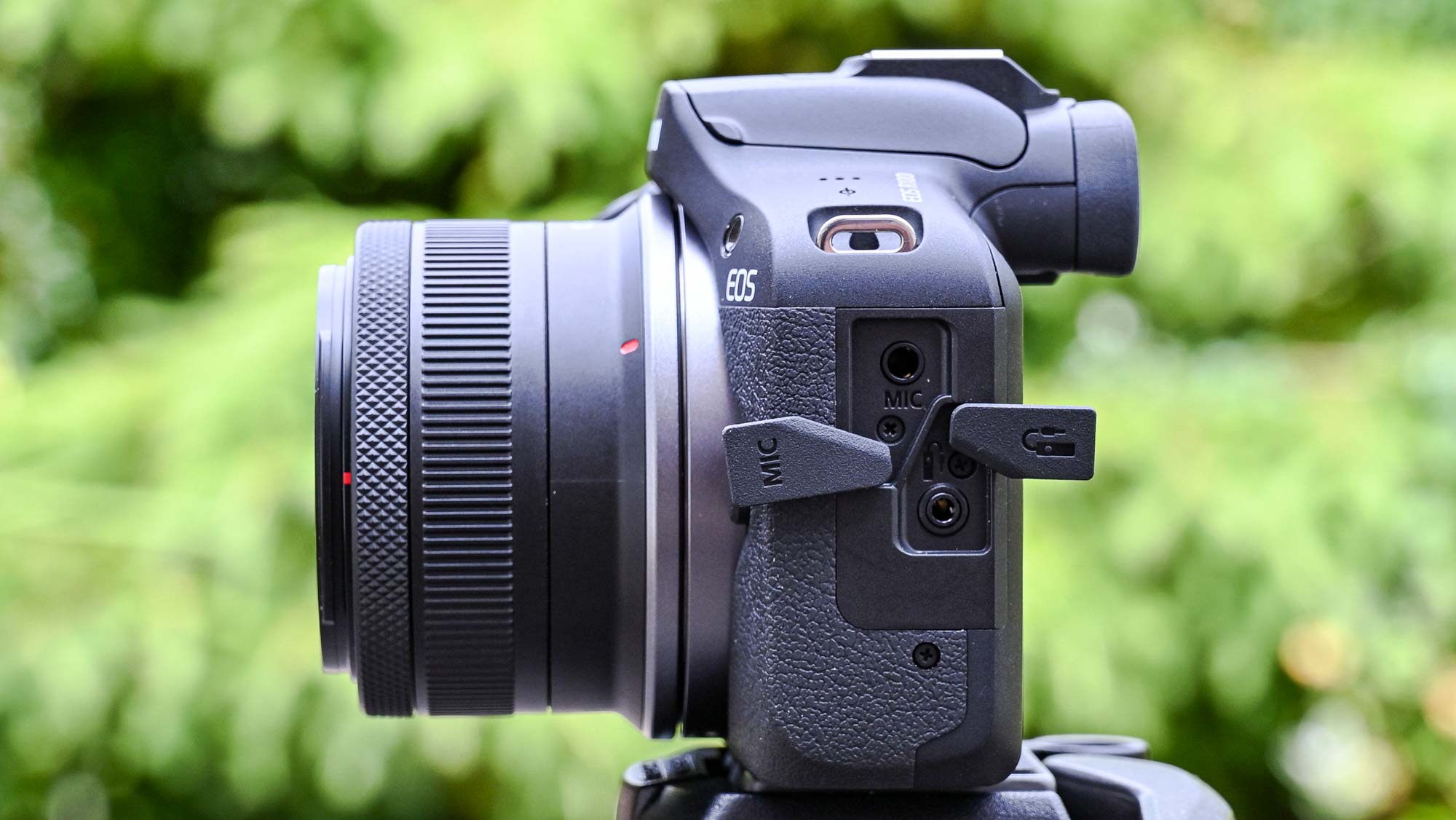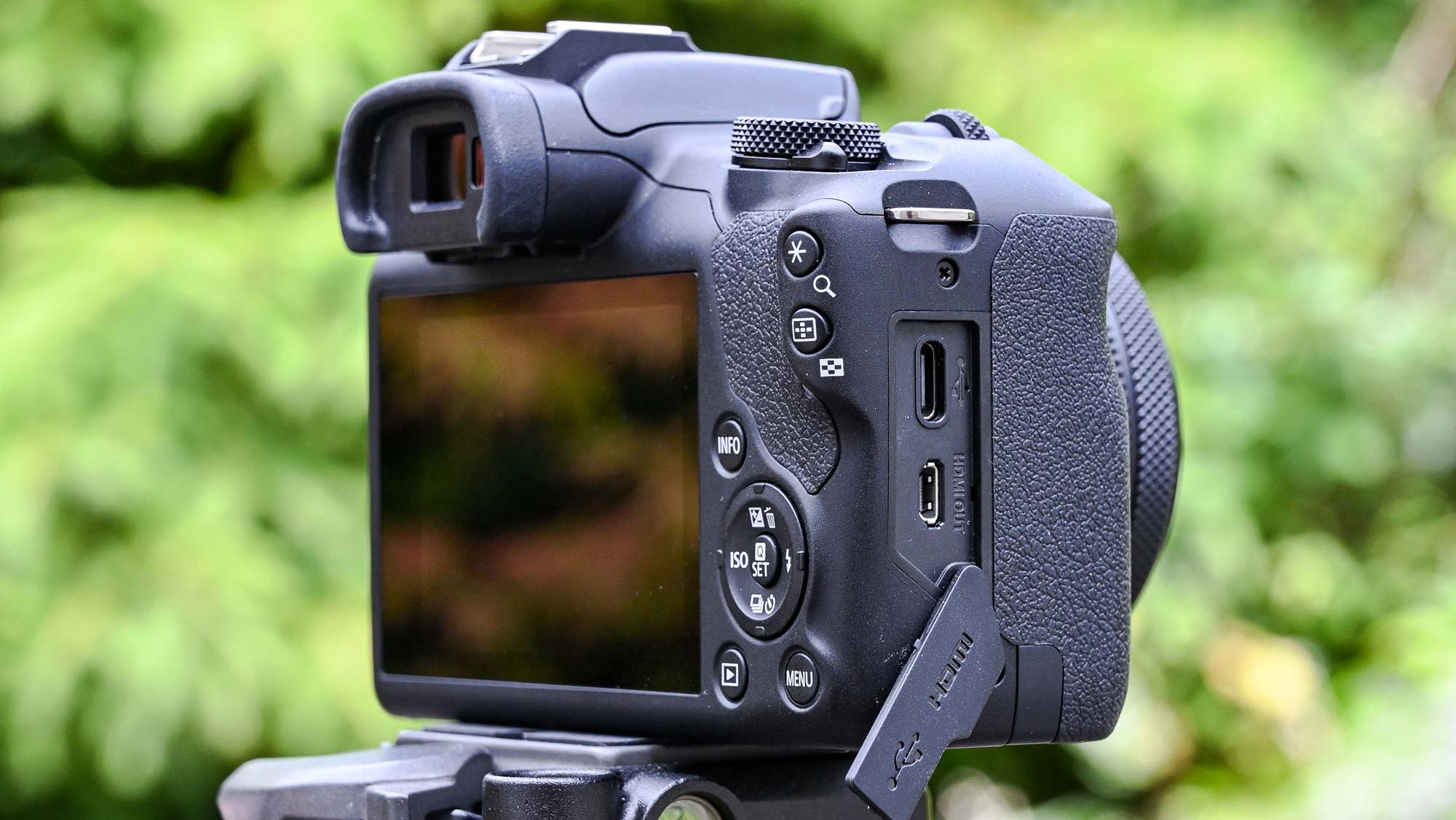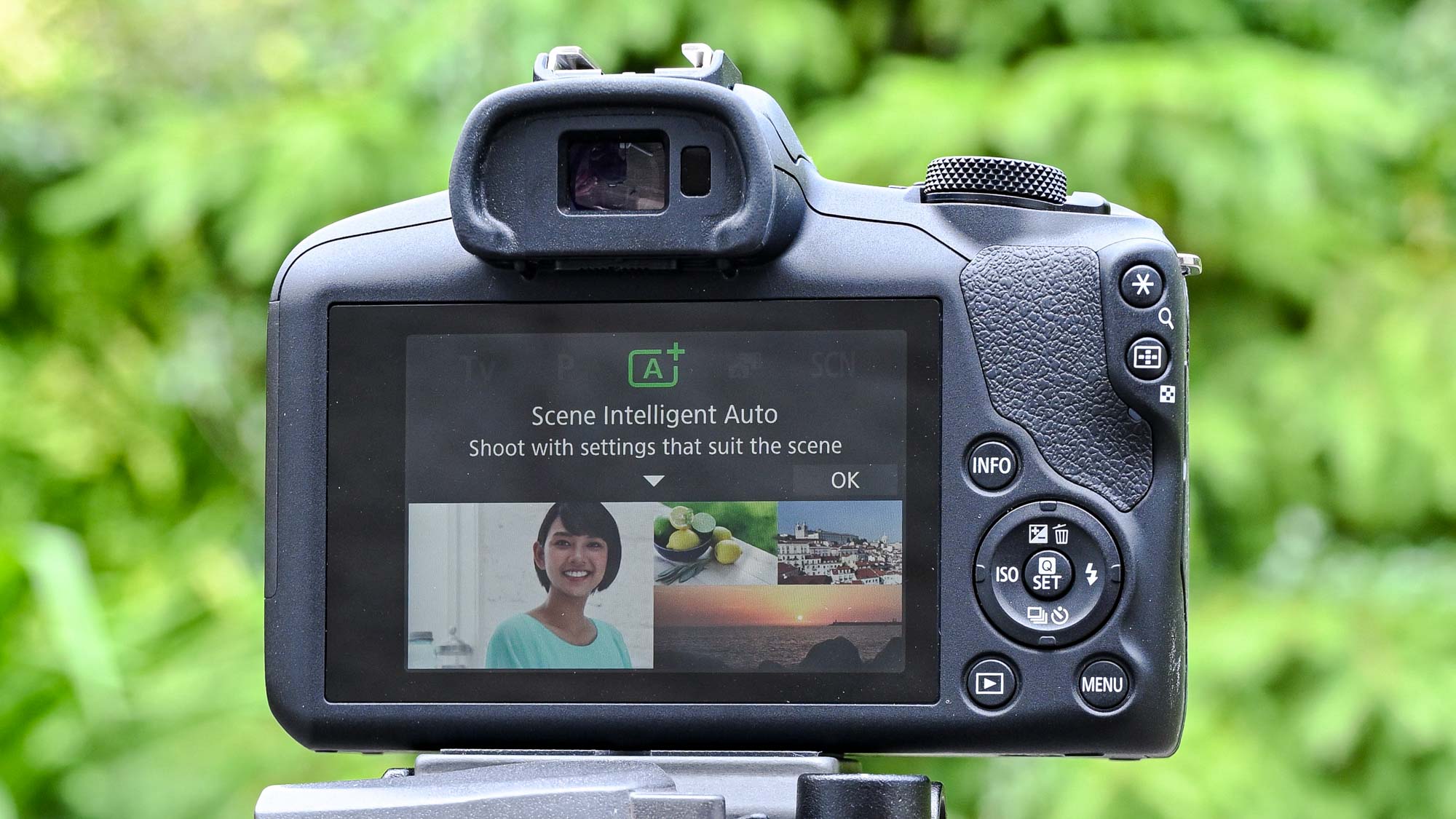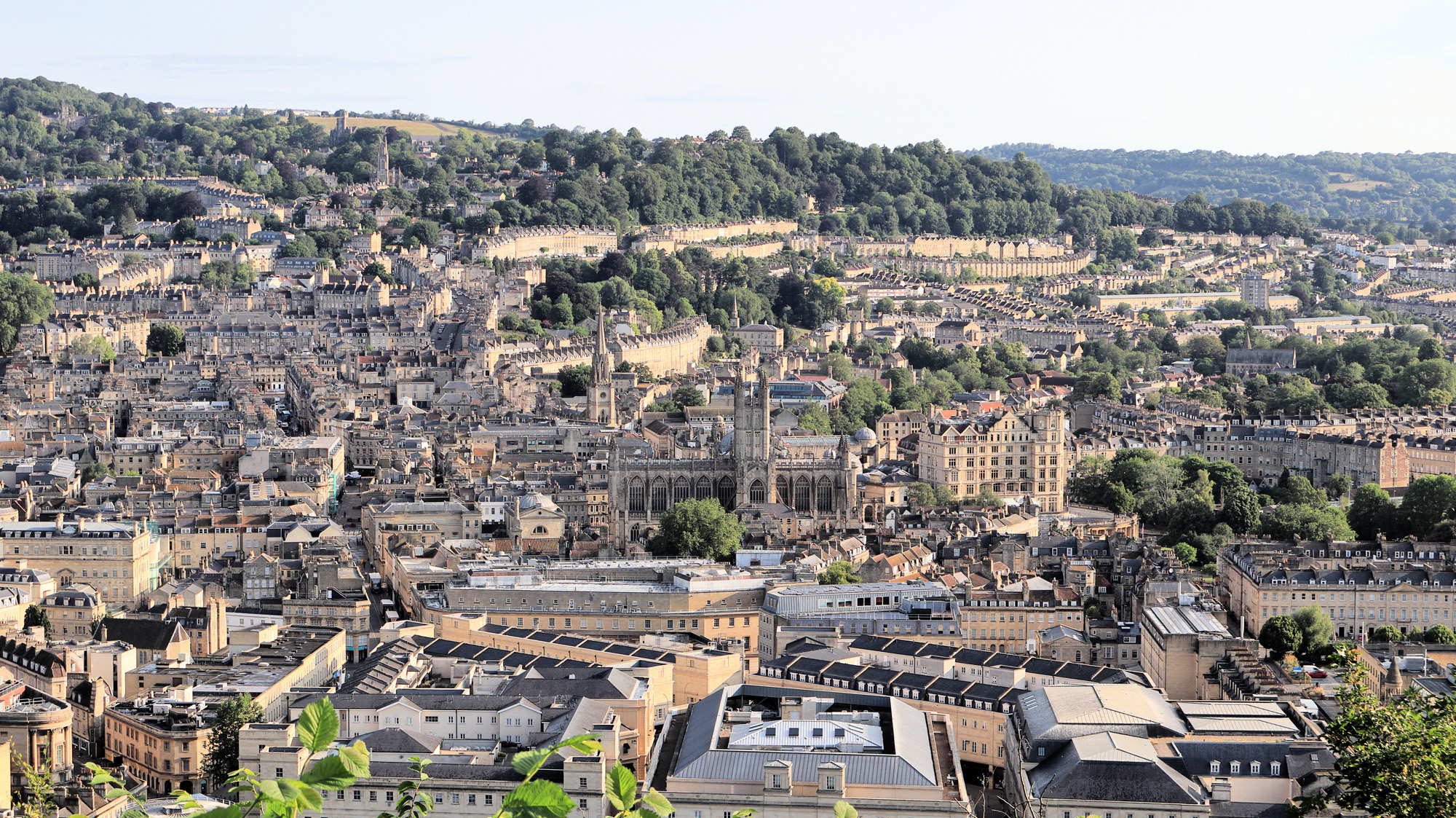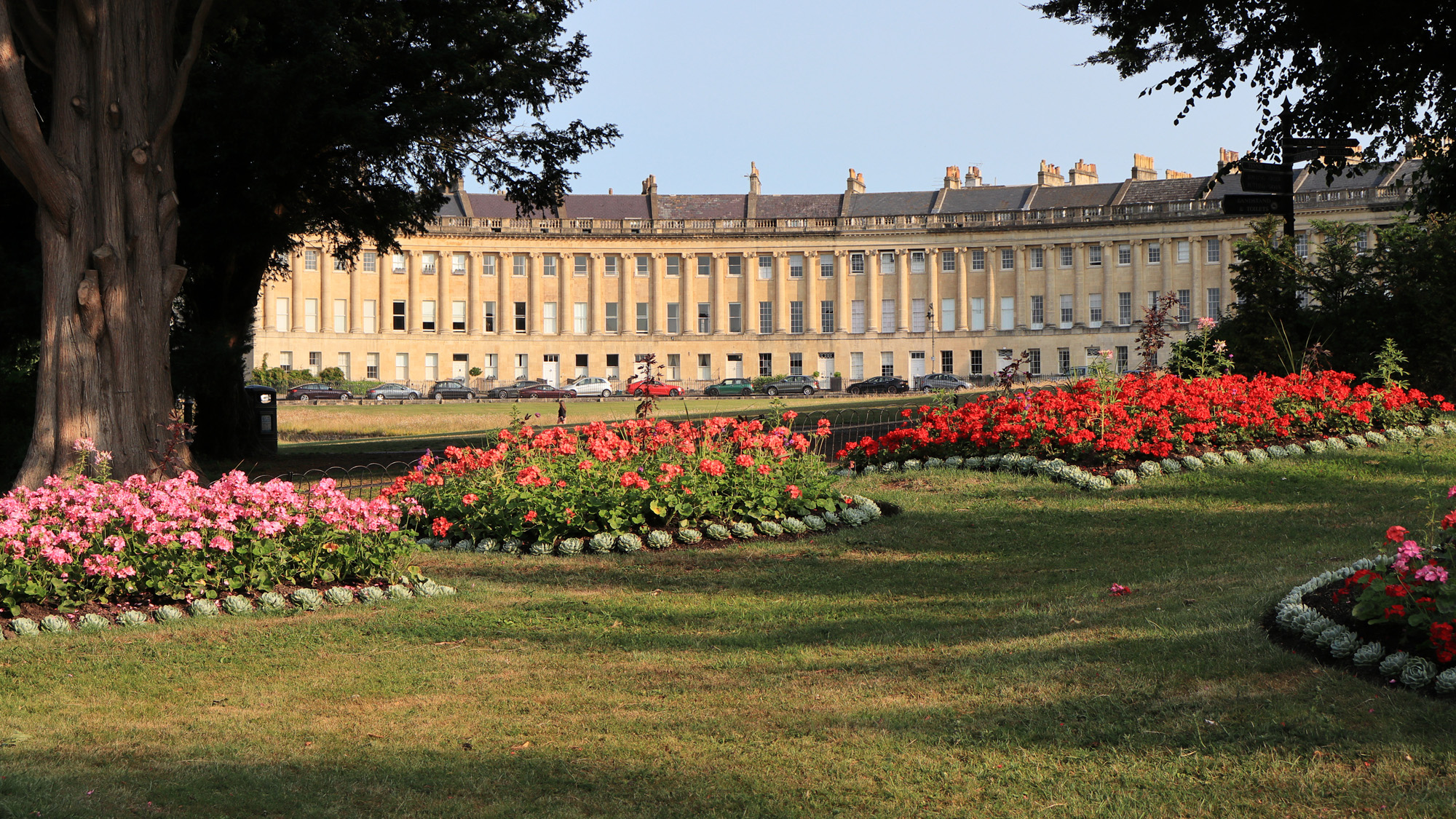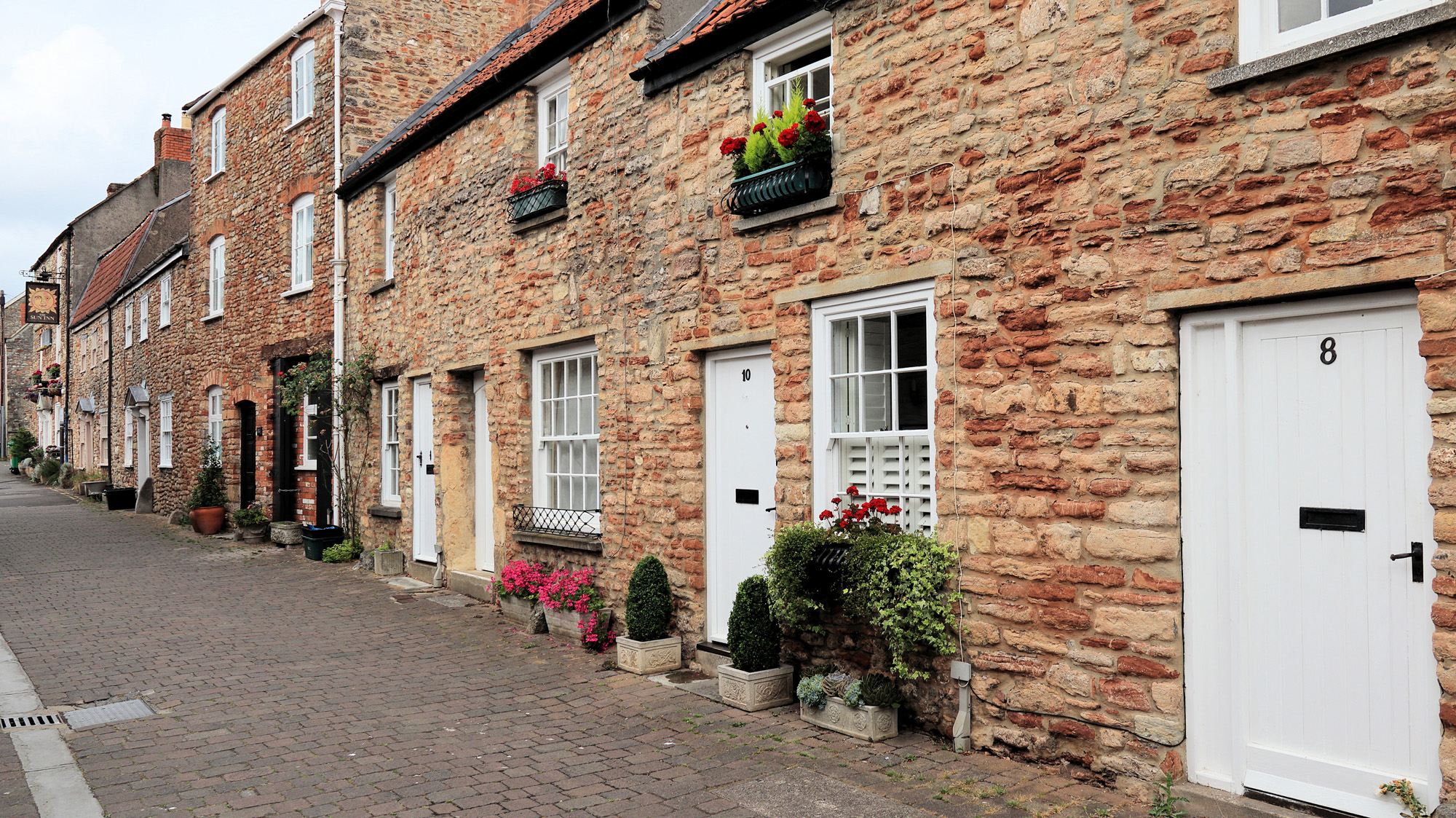Tom's Guide Verdict
The Canon EOS R100, has a bare bones feature list, resulting in a compact, lightweight and relatively inexpensive camera. It’s simple to use yet capable of delivering excellent image quality and decent video, but if you’re looking for room to grow, we’d spend a little more.
Pros
- +
Compact and lightweight
- +
Simple but effective
- +
Budget-friendly price tag
- +
Lovely images
Cons
- -
Fixed LCD
- -
No touchscreen
- -
Lacking AF detection modes
Why you can trust Tom's Guide
Sensor: 24.1MP APS-C Dual Pixel CMOS AF
Image processor: DIGIX 8
Image stabilization: Via lens + Movie Digital IS
AF points: 3,975-point
Viewfinder: 0.39-inch OLED EVF, 2.36 million dots
Display: 3.0-inch color LCD, 1.04 million dots
ISO: 100-12,800 (expandable to 25,600)
Max video resolution: 4K at 25p, 24p
Ports: USB type-C (2.0), micro HDMI, mic mini jack, Remote
Storage: 1x SD/SDHC/SDXC UHS-I
Wireless: Wi-Fi 2.4GHz, Bluetooth 4.2
Shooting speed: 6.5fps (3.5fps in AI-Servo mode)
Battery life (CIPA): 430 shots LCD, 340 shots viewfinder
Size/weight (body inc battery, card): 4.58 × 3.37 × 2.71 inches; 12.56 ounces
Canon hit the ground running with its first mirrorless EOS R-System cameras back in 2018. There are now several APS-C and full-frame models in the line-up, aimed at everyone from beginners to seasoned professionals. The EOS R100 is the most entry-level camera in the group to date, and the least expensive to buy. It’s the mirrorless replacement for the now obsolete entry level Canon DSLRs, price-wise sitting somewhere in the middle of the ground once occupied by the EOS Rebel T7 (EOS 1500D/EOS 2000D) and EOS T8i (EOS 850D).
The EOS R100 follows quickly on the heels of Canon’s first three APS-C format R-System cameras, the EOS R7, EOS R10 and EOS R50. However, if you thought that bigger numbers in the model name equated to more up-market feature-sets and specifications, you’d be wrong.
The R50 is a scaled down R10, itself scaled down from the R7. The R100 is at the bottom of the pile. As such, it’s aimed at beginners and people thinking about buying a ‘proper’ camera instead of always using their smartphone. For that market, there’s a lot to love about this little camera, especially given its price, but there are a few issues too. To find out whether it’s for you, read on to see our full Canon EOS R100 review.
Canon EOS R100 review: Price and availability
The Canon EOS R100 is widely available in the U.S. for around $479, body-only. Beginners are more likely to want a complete kit with a lens or two. Bundles include the camera with an RF-S 18-45mm F4.5-6.3 IS STM standard zoom at $599, or a two-lens kit that adds an RF-S 55-210mm F5-7.1 IS STM telephoto zoom — that’ll set you back about $899. The twin lens kit naturally gives you greater shooting versatility, and both kits offer a decent discount on buying the items separately. In the U.K., the R100 launched with just one purchase option, complete with the RF-S 18-45mm lens at £669.
If you’re moving to mirrorless from a Canon APS-C format DSLR, you might miss the more extended range of the older EF-S 18-55mm lens, compared with the relatively restrictive RF-S 18-45mm. With its effective 28.8-72mm zoom range (taking the 1.6x crop factor into account), the RF-S lens still gives a fairly generous maximum field of view, stretching to useful short telephoto reach. We took the following shot at the most wide-angle zoom setting to see how much we could squeeze into the frame. As you can see, it’s a fairly expansive view, and this lens should have enough range for most applications.
While a telephoto zoom is often the lens people buy as their first add-on for this type of camera, we think the Canon RF 50mm F1.8 STM also makes a perfect coupling. It’s a full-frame lens but, thanks to the 1.6x crop factor of Canon’s APS-C format cameras, gives a field of view equivalent to 80mm on a full frame camera when affixed to the EOS R100. It also features a bright f/1.8 aperture. That makes it perfect for portraiture and still life photography, where you’ll often want a tight depth of field for blurring the background. And it fits right in with the R100 ethos in being compact, lightweight and inexpensive, at $169/£219.
Canon EOS R100 review: Design
The Canon EOS R100 is designed to appeal to people who want a camera that’s small and won’t weigh them down. It certainly achieves that and, thanks to the retractable nature of the kit RF-S 18-45mm lens, it’s small enough to pop into a regular bag with all your daily essentials, making it very travel-friendly.
Get instant access to breaking news, the hottest reviews, great deals and helpful tips.
Although billed as Canon’s smallest and most lightweight EOS R system camera, it actually has the exact same dimensions as the EOS R50 and is only two-thirds of an ounce lighter in weight. Even so, the body weight of 12.56 ounces is incredibly light, thanks to a construction based mostly on glass fiber-reinforced polycarbonate (essentially high-grade plastic) with a few aluminum alloy parts.
A minus point for handling compared with other R system cameras, including the EOS R50, is that there’s no vari-angle touchscreen. The screen in the R100 doesn’t even tilt, let alone swivel. This makes really low-level shooting more of a pain and means the screen can’t face forwards for vlogging or taking selfies. Even more unusual in this day and age, it’s not a touchscreen, so you can’t simply touch an area on which you want the camera to autofocus, and all adjustments in the menu system have to be done the old-fashioned way, by using the multi-way pad and Set button for navigation and applying changes.
Historically, Canon always opted for optical image stabilization instead of IBIS (In-Body Image Stabilization), reasoning that the stabilization unit could be optimized for any given lens. That’s the reason that no Canon DSLR has ever had IBIS, and it wasn’t featured in the original EOS R and RP full-frame mirrorless cameras. That’s been inherited by the newer Canon EOS R8, while the EOS R7 is currently the only APS-C format R system camera to feature IBIS. As such, the R100 relies solely on in-lens stabilization. The RF-S 18-45mm gives 4-stop stabilization, while the RF-S 18-150mm superzoom and RF-S 55-210 telephoto zoom edge ahead to 4.5-stop effectiveness. Even so, that’s bumped up to between 6-stop and 7-stop performance respectively, when combined with IBIS, so we’d count its omission as a downside, although it’s not a feature you’d expect at this price point.
The viewfinder is a good-quality 0.39-inch OLED EVF, with a 2.36 million dot display. That’s a million dots less than in the similarly sized viewfinder of the EOS R8 full-frame camera, but it still delivers an image that looks finely detailed with accurate color rendition and remains smooth when panning. An eye sensor enables automatic switching between the viewfinder and rear screen display as you put your eye to the viewfinder and move it away again. Another nice touch is that various options are available for shooting and playback displays, which you can cycle through via the Info button on the rear of the camera.
For physical connectivity, the R100 features a USB type-C port, although it’s only ‘Hi-speed 2.0’, so maximum data transfer tops out at 480Mbps, compared with the theoretical 10Gbps of the R50. In practice, this means it’ll take a lot longer to transfer stills and video files from the camera to a computer using the USB port.
There’s also a micro HDMI port, stereo mic mini jack and remote controller socket (RS-60E3 type). As you’d expect in a camera at this price, there’s only a single memory card slot rather than dual card slots, and it’s of the SD/SDHC/SDXC UHS-I variety, instead of the more recent and faster UHS-II standard. The latter is a better fit for recording UHD 4K video, with less chance of dropouts. For wireless connectivity, there’s built-in Wi-Fi 2.4GHz (but not 5GHz) and Bluetooth 4.2, the latter enabling connectivity with Canon’s neat little Bluetooth BR-E1 wireless remote controller.
Canon EOS R100 review: Controls
The Canon EOS R100 aims to keep things simple. Some APS-C format cameras as well full-frame bodies can seem quite daunting for beginners, with a mass of potentially confusing dials, buttons and switches. That’s certainly not the case here.
Up on top, the control layout is easy to get your head and fingers around. There’s an on/off switch, a shooting mode dial that includes ‘intelligent auto’, scene modes and filter effects, a single rotary dial and independent shutter release and video start/stop buttons. The camera also features a small pop-up flash, which is useful not only for shooting under dull lighting but also for applying fill-flash to banish unsightly shadows in daylight portraiture.
A nice beginner-friendly touch is that the ‘Display Level’ section of the main menu offers a Guided menu display option, interactive Mode guide, and a pop-up Feature guide. For the uninitiated, these all help to find your way around the camera, and learn how to use different shooting modes and options to best effect.
Around the back, controls are really pared back. There’s no rear control dial so, for example, it’s not immediately obvious how to adjust both the shutter speed and aperture in Manual shooting mode. As it turns out, you need to press the exposure compensation button to switch between the two, which isn’t exactly intuitive. We had similar concerns about Canon stripping back their direct controls with the Canon EOS R8, which lacks an AF joystick, and the Canon EOS R50, which could also do with an AF joystick, as well as another primary parameter dial.
On the plus side, a Quick menu is available that makes it easy to access and alter important shooting settings, and the multi-way pad gives instant access to exposure compensation, flash mode, drive mode and ISO speed, including enabling or disabling the Auto ISO function.
On balance, everything that beginners are likely to need is easy to get at. Even most of the adjustments required by more experienced, creative photographers are never really too far away. There are also options for customizing the action of various buttons and the multi-way pad in the Custom Functions menu, so you can set up the camera to suit how you shoot.
One menu option that’s featured in most current Canon cameras but is missing in the R100 is an image sensor-cleaning routine. This can generally be run automatically at startup or shutdown, or both, or anytime you feel the need to use it. Considering that the image sensor is open to the elements in this and most other mirrorless cameras, every time you swap lenses, sensor-cleaning is something we’d like to have seen included.
Canon EOS R100 review: Performance
The Canon EOS R100 isn’t built or priced to be a high-performance camera, but it’s certainly capable of capturing great photos. We love the slight warmth and natural look that Canon cameras tend to give to skin tones, and the rich vibrancy of their landscape images. The R100 is no exception.
The camera performs very well at low ISO settings. Sunny-day photos look full of life but, for any camera, dull, overcast conditions can be more of a challenge. We shot the following gallery of garden flower images under very flat lighting with heavy cloud across the sky. The R100 nevertheless delivered an impressive selection of photos, with natural yet vibrant color rendition and plenty of detail and punch.



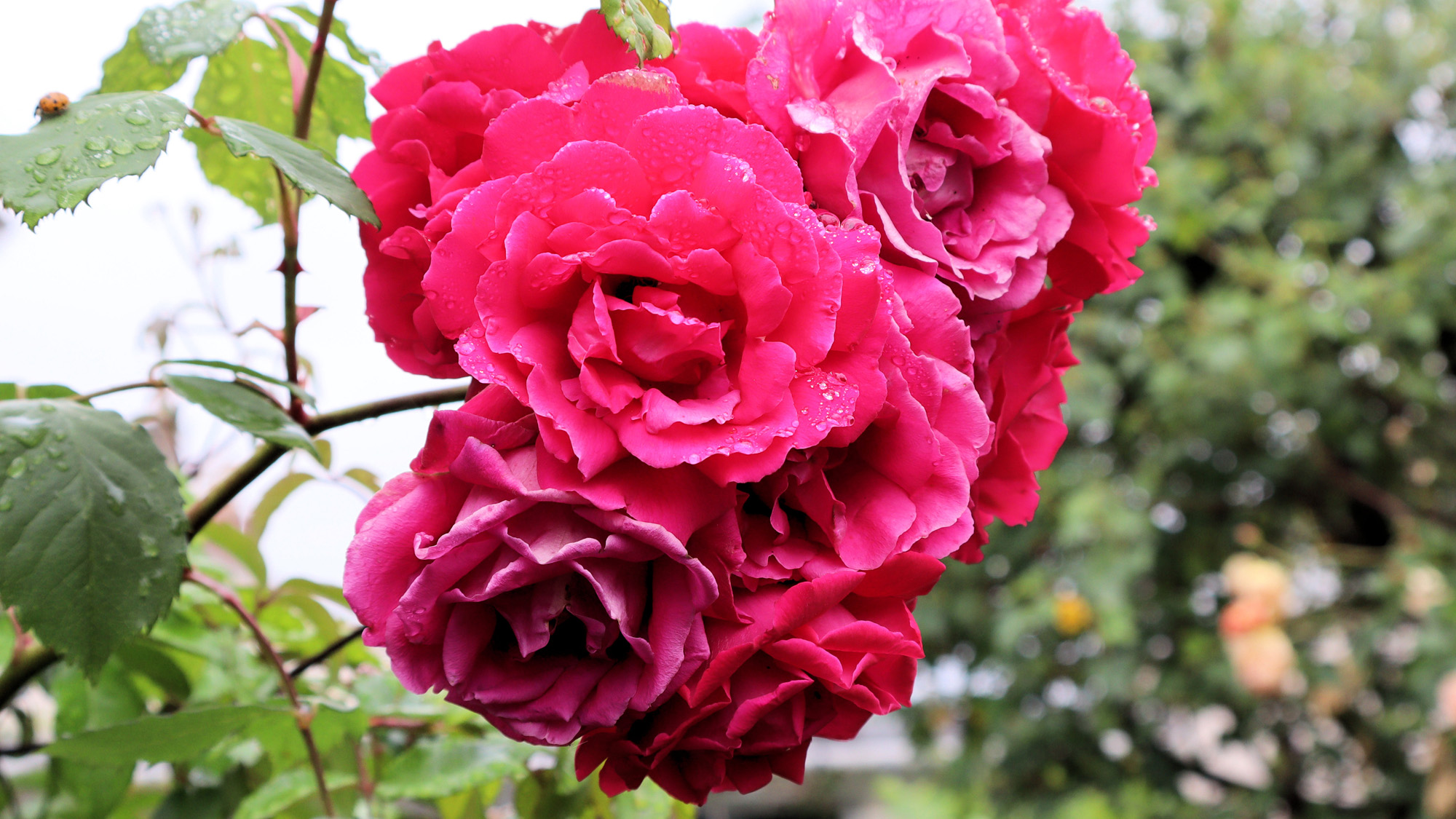
A slight niggle for maintaining consistent quality under artificial lighting is that the R100 has no anti-flicker detection. Again this is something that’s featured in the R50 and other cameras. If you’re shooting under the likes of fluorescent or LED mains lighting with shutter speeds of 1/120th of a second or faster for 60Hz mains (1/100th for 50Hz), you can end up with banding in your shots, with lighter and darker areas from top to bottom of the frame. Flicker detection takes this into account and automatically releases the shutter at the optimum moment to avoid the problem.
Exposure metering is very reliable, even in tricky high-contrast conditions. Its performance is effectively boosted by Canon’s Auto Lighting Optimizer, which aims to avoid blown highlights while retaining detail in dark lowlights. We tested this by shooting the following images, which have very bright highlights and dark shadows. The Auto Lighting Optimizer kept the shots well balanced, keeping detail in the shadows without washing out the pale sky to white.
Various Picture Styles are available with the likes of Standard, Portrait, Fine Detail, Neutral and Monochrome on the menu, which optimize the rendition of tone, color, contrast and sharpening for any given scenario. There’s also an Auto setting which does an uncannily good job of getting things right for wide-ranging subject matter. More surprisingly for an entry-level camera, there are three empty slots on the menu for creating and storing your own Picture Styles, or you can download additional ones from Canon’s website.
To test the Auto option for Picture Styles, we selected the relevant option setting and took a series of shots using different subject matter. The results were consistently impressive and, as in the example image below, the Auto setting often applies an enhancement that falls between different manual presets.
As usual, if you shoot in RAW quality mode, you can swap between different Picture Styles as well as altering the white balance and other parameters at the editing stage, using one of the best photo editing software applications.
With good glass attached, the R100’s 24.1 megapixel image sensor is capable of capturing very fine detail and texture, which holds up well even in large-format printing or when cropping images very aggressively. To enhance the optical performance of lenses, the R100 features Canon’s Digital lens optimizer as a menu option. It’s a software-based system that analyzes deficiencies in individual images and automatically enhances them by improving sharpness and minimizing aberrations like diffraction and color fringing. We tested it out with the RF-S 18-45mm kit lens, taking shots of highly detailed subject matter, as in the example image below. We were impressed at the resulting sharpness and clarity in the image, with negligible distortion or color fringing.
Dynamic range is also very good at low ISO (sensitivity) settings, with plenty of detail being retained in bright highlights and dark shadows. As we mentioned, the camera’s Auto Lighting Optimizer option boosts performance in this respect. However, dynamic range drops off a bit at ISO 800 and is comparatively lackluster at very high ISO settings, where image noise can become quite noticeable.
The maximum sensitivity in the standard range is rather modest in current terms, topping out at ISO 12,800. The ‘expanded’ maximum of ISO 25,600 is best avoided for the sake of maintaining usable image quality. As we found out when taking the following example shot of an architectural interior under ambient lighting, shots look quite noisy even at a modest sensitivity setting of ISO 6400.
We also took test shots of a model car under very dull lighting, at ISO 200 and ISO 12800, for the sake of comparison. The latter is pretty disappointing, with very noticeable image noise and a loss of fine detail caused by smoothing from High-ISO noise reduction.
Delve deeper into the more technical aspects of performance and the R100 starts to look a bit poor in relation to the R50 and other recent cameras in the EOS R-System range. Most have deep-learned AI autofocus systems that can detect and track people (including eyes, face, head, body), animals (dogs, cats and birds) and vehicles (including racing cars and motorcycles). The R100 can only recognize people, so auto detection and tracking for other subjects is off the menu. If you’re after a camera to grow with you as you expand your photographic horizons, you might be best off spending more on a camera with Canon’s full AF system, such as the EOS R10, where there are automatic detection modes to suit more genres of photography.
On the plus side, autofocus works very well for portraiture, with options for the camera to automatically select the closer eye and switch between them as people move around. You can also switch between eyes manually by pressing the AF point selection button. Autofocus is also consistently reliable in regular single-point and wide-area modes. We tested its performance by shooting wide-ranging subject matter, including architectural scenes with near foreground and distant background elements. The ‘Whole area AF mode’, which positions the focus setting using information from the whole scene, generally did a good job of setting the lens to the ideal focus distance.
Next up on the ‘good but not great’ list is action shooting. Many of Canon’s recent cameras have a fully electronic shutter option that delivers faster maximum shutter speeds and a quicker maximum drive rate. For example, the R50 tops out at a shutter speed of 1/4000th of a second and 12fps (frames per second) with the mechanical shutter, rising to 1/8000th and 15fps in fully electronic shutter mode. By contrast, the R100’s maximum shutter speed is limited to 1/4000th of a second and the maximum burst rate is a relatively slow 6.5fps.
In fact, if you switch from One Shot (single) to Servo (continuous) autofocus mode, so that you can track subjects as they move, the maximum drive rate drops from 6.5fps to just 3.5fps, which is certainly less than sporty. It’s not all good news regarding buffer depth either. While there’s enough capacity to keep shooting at top speed for about 100 shots in JPEG quality modes, that drops to 17 shots in Compressed-RAW and a mere 6 shots in RAW quality mode, which equates to less than a second.
Good battery life is always a challenge for mirrorless cameras compared with DSLRs, due to the current drain of the electronic vs optical viewfinder. In keeping with its compact size, the R100 also has a fairly small Canon LP-E17 battery. Even so, the camera has pretty good stamina, rated at 340 shots using the electronic viewfinder or 430 shots composing images with the rear screen, from a fully charged battery.
Canon EOS R100 review: Video
Again, the Canon EOS R100 loses out to its big (or rather identically sized) brother, the R50 for video. To our minds, the video specs are ‘adequate’ rather than inspiring. For starters, there’s a 30-minute time limit for each clip, rather than a full hour, which can leave you feeling a bit short-changed.
Both cameras are able to shoot in 4K UHD at 30p, 25p or 24p, in the MPEG-4 AVC/H.264 video format with audio AAC. For color sampling, however, the R100 is limited to both 4K and Full HD using YCbCr4:2:0 8-bit. The R50 goes one better with the additional option of HDR PQ, which gives you 10-bit color for high dynamic range. There’s no HDR video option with the R100 and you can only output 4K frame grabs as 8-bit JPEGs, whereas the R50 gives you an additional HEIF option for extracting 10-bit stills from HDR movie clips.
On the plus side, the pictorial quality of video clips from the R100 is very pleasing, and the dreaded rolling shutter effect is kept to a minimum. This helps to retain the natural shape of fast-moving objects. There’s also an option for shooting slow-mo footage at 120fps in HD 720p versus the Full HD 1080p slow motion capture of the R50.
At both 720p and 1080p, you can take advantage of the R100’s Dual Pixel CMOS AF, which combines phase-detection and contrast-detection for fast and accurate autofocus. At 4K UHD, however, you can only use contrast-detection autofocus, which can be much slower and more prone to hunting.
Canon EOS R100 review: Verdict
Make no mistake, the Canon EOS R100 is a clever little camera that’s ideal for beginners. It has a generally intuitive interface, and it’s sufficiently small and lightweight for taking anywhere and everywhere. The Intelligent Auto shooting mode works well and the guided menu option helps to explain what’s going on when you’re dabbling with more advanced camera settings. Best of all, image quality for stills is lovely and video is decent for the money, too.
There’s a caveat though, and it comes in the similarly small and lightweight shape of the EOS R50. The R50 has a more advanced feature set, better performance for both stills and video (it’s designed to be a tool for video content creators, whereas the R100 is firmly marketed towards photography), and a vari-angle touchscreen compared with the R100’s fixed LCD, which isn’t even a touchscreen. Ultimately, both are very beginner-friendly but the R50 is better able to grow with you as you learn new photographic skills and become more creative. Sure, the R50 is more expensive to buy, but not by a huge amount, and could work out cheaper in the long run if you soon feel the need to trade in your R100 for something more sophisticated.

Matthew Richards’ passion for photography began as a child, learning from his father who was an acclaimed architectural, commercial, industrial and portrait photographer. Matthew qualified as an electronics engineer and began his career working for the BBC in the 1980s, testing, installing and repairing broadcast studio equipment. In the early 1990’s he switched to journalism and was employed as a feature writer, reviews writer and editor-in-chief at Future Publishing in the UK, working mainly on computing and technology magazines.
In 2001, Matthew Richards went freelance, pursuing his passion for photography and working on assignments in locations across the UK, as well as in the USA, Mauritius, Malaysia and China. Technical journalism still plays a major part in Matthew’s freelance career and he has been commissioned to write countless reviews and group tests of cameras, lenses and other photographic accessories over the last 20 years, for leading photography magazines including Digital Camera, Digital Photographer, N-Photo and PhotoPlus, as well as for a number of photographic websites.
